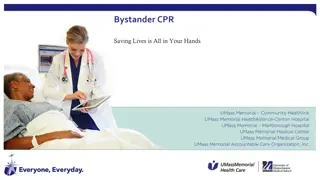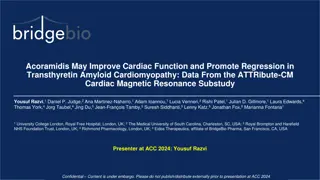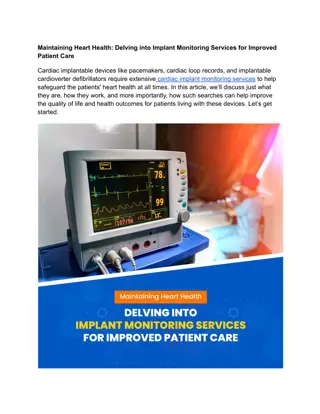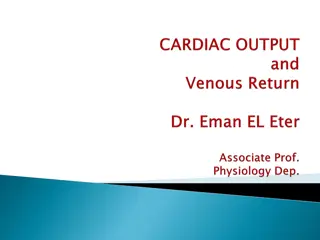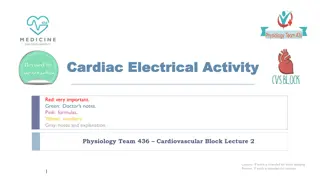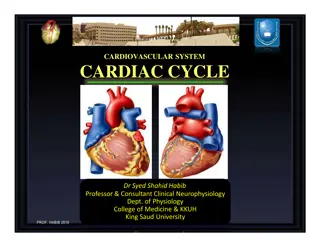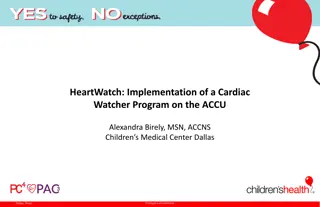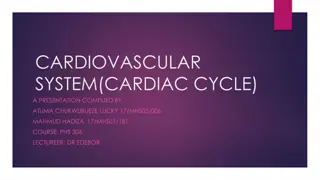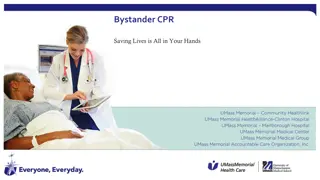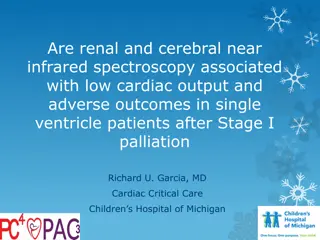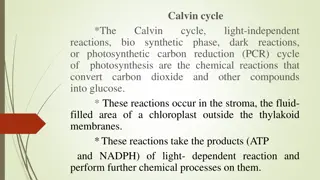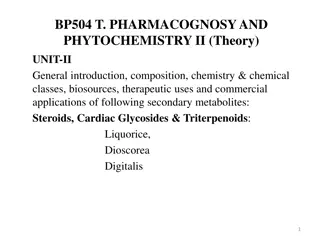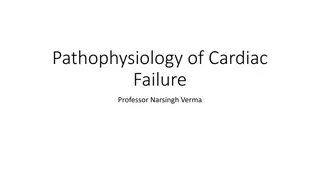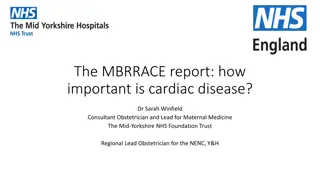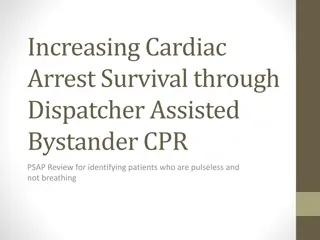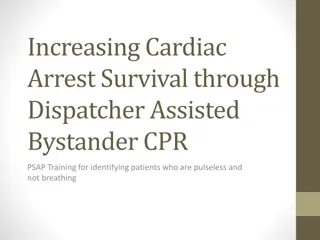
Cardiac Cycle
Explore the comprehensive overview of the cardiac cycle, including its physiology, phases, and duration. Discover how the heart functions through diastole, systole, and the crucial stages in between. Gain insights into the essential components of each cardiac cycle and the intricate processes that keep the heart functioning optimally.
Download Presentation

Please find below an Image/Link to download the presentation.
The content on the website is provided AS IS for your information and personal use only. It may not be sold, licensed, or shared on other websites without obtaining consent from the author. If you encounter any issues during the download, it is possible that the publisher has removed the file from their server.
You are allowed to download the files provided on this website for personal or commercial use, subject to the condition that they are used lawfully. All files are the property of their respective owners.
The content on the website is provided AS IS for your information and personal use only. It may not be sold, licensed, or shared on other websites without obtaining consent from the author.
E N D
Presentation Transcript
StudyMafia.Org Cardiac Cycle Submitted To: Studymafia.org Studymafia.org Submitted By:
Table Contents Definition Introduction Cardiac Cycle Cardiac Cycle Physiology Cardiac Cycle Phases Duration of Cardiac Cycle Conclusion 2
Definition The cardiac cycle attributes to a comprehensive heartbeat from its production to the commencement of the next beat. 3
Introduction It comprises diastole, the systole, and the intervening pause. The occurrence of a cardiac cycle is illustrated by a heart rate, which is naturally indicated as beats per minute. A healthy human heart beats 72 times per minute which states that there are 72 cardiac cycles per minute. The cardiac cycle involves a complete contraction and relaxation of both the atria and ventricles and the cycle last approximately 0.8 seconds 4
Cardiac Cycle Physiology The human heart consists of four chambers, comprising left and right halves. Two upper chambers include left and right atria; lower two chambers include right and left ventricles. The key function of the right ventricle is to pump deoxygenated blood through the pulmonary arteries and pulmonary trunk to the lungs. While the left ventricle is responsible for pumping newly oxygenated blood to the body through the aorta. 6
Cardiac Cycle Phases Atrial Diastole: In this stage, chambers of the heart are calmed. That is when the aortic valve and pulmonary artery closes and atrioventricular valves open, thus causing chambers of the heart to relax. Atrial Systole: At this phase, blood cells flow from atrium to ventricle and at this period, atrium contracts. Isovolumic Contraction: At this stage, ventricles begin to contract. The atrioventricular valves, valve, and pulmonary artery valves close, but there won t be any transformation in volume. 7
Cardiac Cycle Phases Ventricular Ejection: Here ventricles contract and emptying. Pulmonary artery and aortic valve close. Isovolumic Relaxation: In this phase, no blood enters the ventricles and consequently, pressure decreases, ventricles stop contracting and begin to relax. Ventricular Filling Stage: In this stage, blood flows from atria into the ventricles. 8
Duration of Cardiac Cycle In a normal person, a heartbeat is 72 beats/minute. So, the duration of one cardiac cycle can be calculated as: 1/72 beats/minute=.0139 minutes/beat At a heartbeat 72 beats/minute, duration of each cardiac cycle will be 0.8 seconds. 9
Duration of Cardiac Cycle Duration of different stages of the cardiac cycle is given below: Atrial systole: continues for about 0.1 seconds Ventricular systole: continues for about 0.3 seconds Atrial diastole: continues for about 0.7 seconds Ventricular diastole: continues for about 0.5 seconds 10
Conclusion The heart operates through the expansion and contraction of its chambers and by the opening and closing of valves at the right time in the cycle. The heart pumps blood by expanding and then contracting, first taking in blood and then pushing it through the circulatory system. 12
References Google.com Wikipedia.org Studymafia.org Slidespanda.com
Thanks To StudyMafia.org

